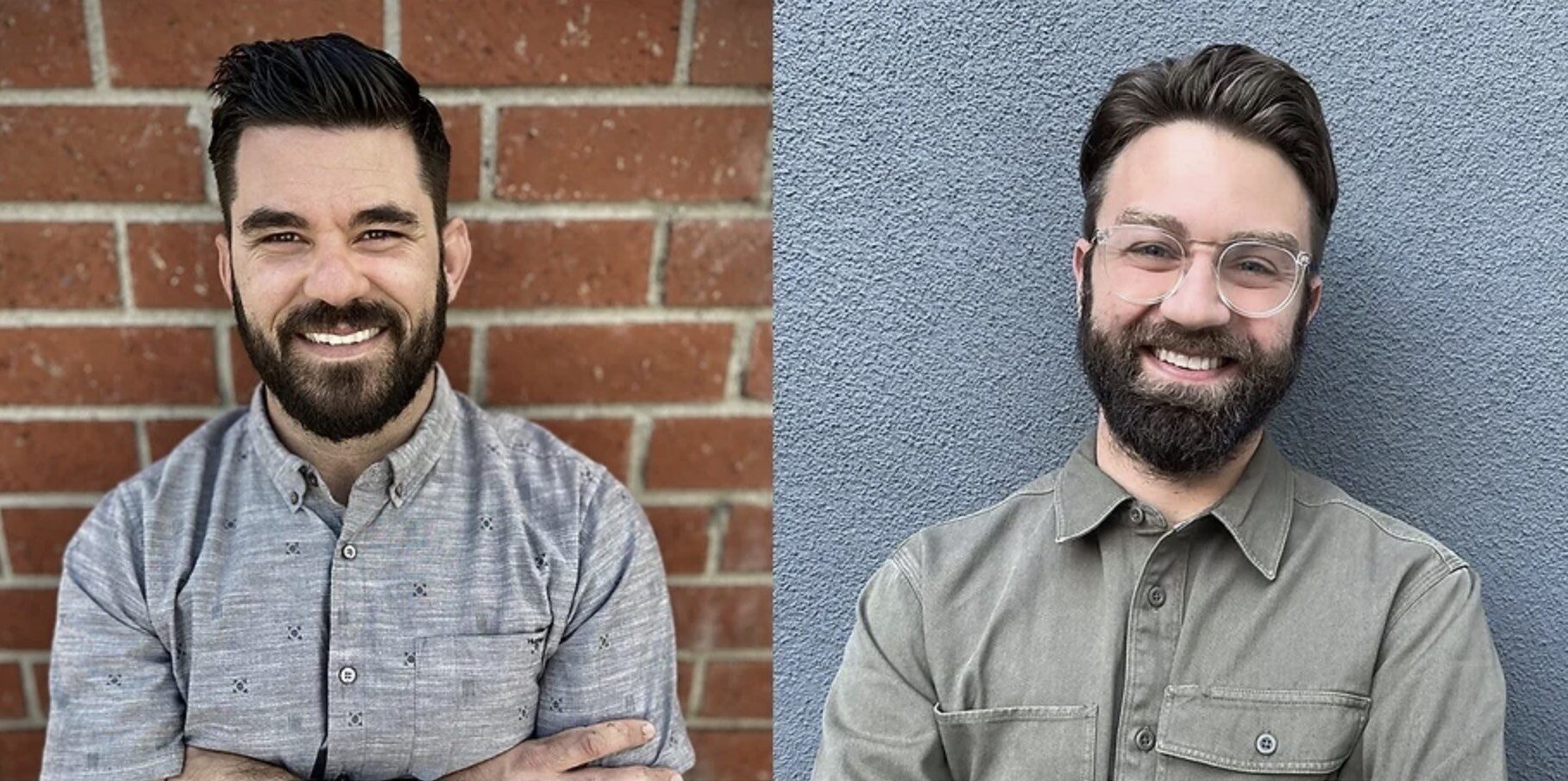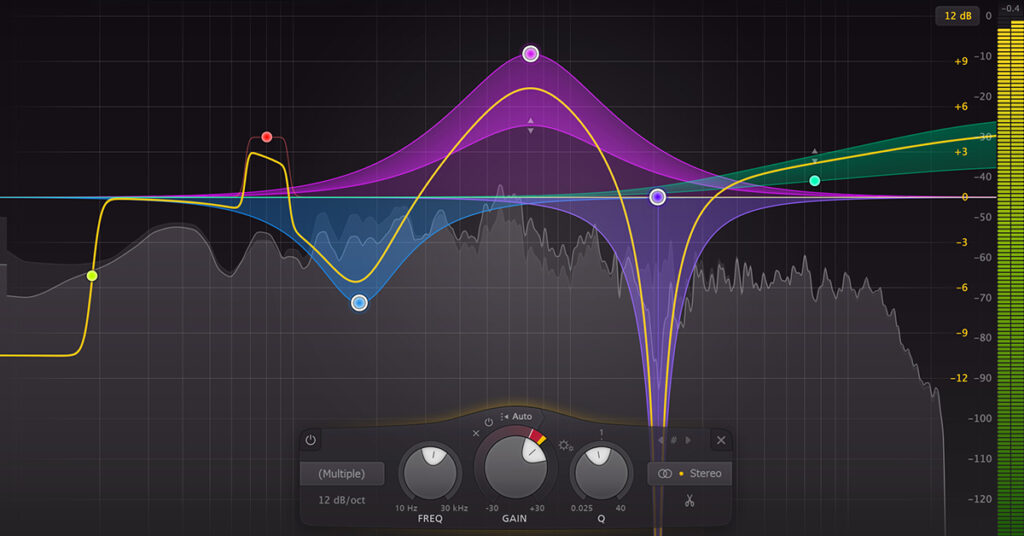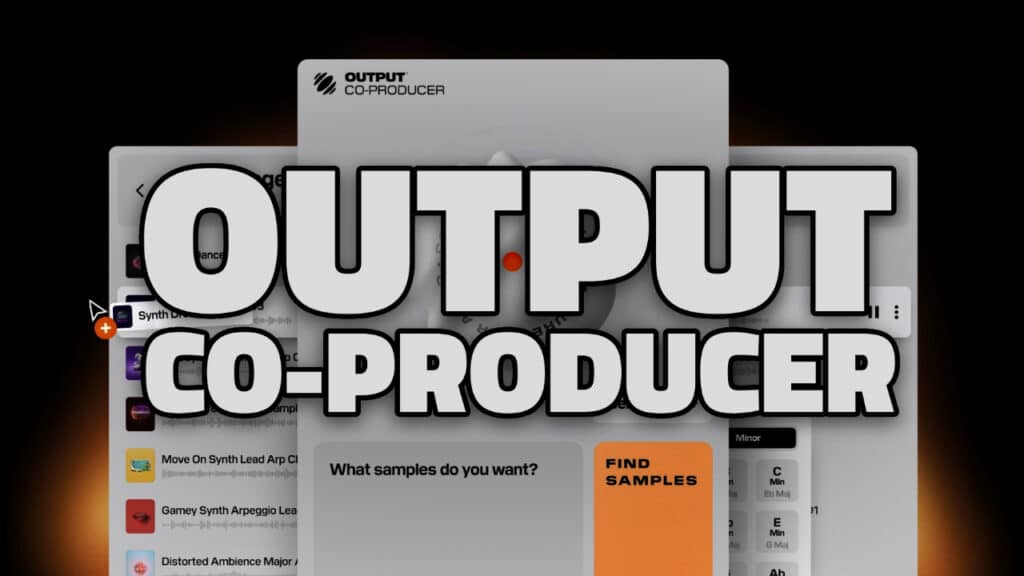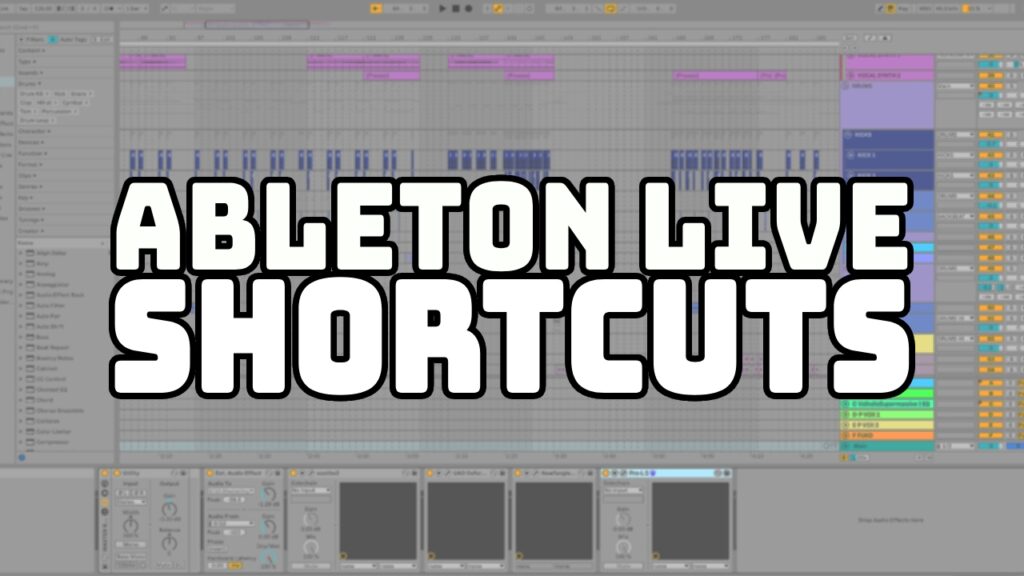I recently spoke with Emmy-Nominated re-recording mixers Nick Offord and Ryan Collins, who discussed coming up in the industry, and their work on Dopesick and Pam & Tommy.
Ian Vargo: Can you talk about your backgrounds? What interested you about working in sound?
Ryan Collins: I attended music school hoping to work as a sound engineer in the music industry. It wasn’t until just after graduation that I became interested in post-sound. I worked at a small facility in Philadelphia called The Audio Post. We did radio, commercial work, and some small films. This is where I started to learn about the postproduction process and became intrigued by the possibilities of storytelling through sound.
Nick Offord: I have always wanted to be involved with sound in one way or another. I loved movies as a kid, but always had visions of working in a recording studio with bands. There was a certain point where a light bulb went off and I realized I could work with music and film together. That is when I decided to try and find my way into re-recording mixing.
BREAKING INTO THE INDUSTRY
IV: What was your first job in the industry?
RC: After I moved from Philadelphia to Los Angeles, I worked for Dane Davis as an intern at Danetracks. Dane is a legend in the film sound community, so it was an honor to get to learn from one of the industry’s best. I gained an immense amount of knowledge from Dane, which opened a world of opportunities.
NO: I started at Sony Pictures back when the sound department had its own shipping and receiving department. I worked my way up from storing mag film and getting coffee and food for people to becoming a mix tech and learning how to run all the different dub stages. That also allowed me to sit in with some of the best mixers in the industry. The time I was able to spend with them was incredibly important in helping me learn how to mix. I was able to cut my teeth working on short films for a lot of different filmmakers, but my big break was working with Glamour Magazine on their shorts with Jessica Biel, Eva Mendes, & Zoe Saldana when they were all starting to direct.
THE IMPORTANCE OF TECHNOLOGY
IV: How has technology changed over the years and are there any pieces of technology you can’t live without, whether they be software or hardware?
RC: Technology has changed immensely over the years. When I first learned to mix, we had separate automation files on the console. These days, all automation exists in one single Pro Tools session. This makes it much more possible to take a mix to various mix stages or to collaborate more seamlessly with sound editors while temping or pre-dubbing where the material will move from one room to another. Also, the quality of plugins has vastly improved. The plugins I use on every mix are FabFilter’s Pro-Q 3 EQ, Exponential Audio’s Stratus 3D reverb, and Cargo Cult’s Spanner.
FabFilter Pro-Q 3, a favorite tool for many re-recording mixers. For more info, check out our article on The Best EQ Plugins.
NO: When I started mixing, it was on a Harrison MPC-4D. The workflow was very different since it was an “analog” console. Now, everything is digital. I really enjoyed working on that desk. There is something about that kind of workflow and having sound go through real hardware that felt special. I have been using Pro Tools for close to 15 years, so to switch to a new DAW now would be very time-consuming. My most important plugin that I use would probably be the FabFilter Pro-Q 3 EQ. You can do so many different things with that one EQ—it’s a very powerful tool. For both shows, I also used iZotope RX-8 for dialog cleanup.
IV: You did such a great job in creating believable, immersive environments in Dopesick. Can you talk a bit about this and about the work you put in to create contrast between the different environments?
RC: When creating environments for any show, the focus should always be on the story. In Dopesick, it was important to establish our set as a rural Virginia mining community. The sound of each location is built to portray a small blue-collar town. Loop group actors, as locals, and peaceful nature sounds help to construct a world of familiar, everyday people with integrity and values. This sonic picture is painted in stark contrast to the large, unprincipled pharmaceutical company.
NO: Thank you! I think the collective effort was doing our best to make it feel as real as possible. We wanted to feel like we were in the mines with the workers. We needed to feel a connection with the town that these characters lived in. Once the addiction starts to take over, there is a tone shift in the show. If something felt artificial, it could distract the audience from what is happening in the story.
IV: Michael Keaton was incredible as Dr. Samuel Finnix, and he goes through such a painful journey. How did you use sound to emphasize his descent into addiction?
RC: We begin the season with busy atmospheres filled with life. Birds and other natural sounds set against the backdrop of a modest town. As Finnix begins his struggle with addiction the world becomes muted and isolating. As his life starts to deteriorate, the world around him mimics this decline. The sonic backgrounds throughout the series serve as a reflection of Finnix’s state of consciousness through his difficult journey.
NO: I’m so glad you chose to point this out! His journey is pretty incredible, so we wanted to support that as best as we could. Ryan can speak more on how we were able to create this sonic world that followed his arc throughout the show.
THE IMPORTANCE OF DOLBY ATMOS TO A RE-RECORDING MIXER
IV: There was a Dolby Atmos mix of Dopesick, how did you use it to enhance the audience experience?
RC: A crucial scene in the series is when Betsy is injured during a mining accident. There are distant explosions and chaos that occur above us that eventually lead to the mine’s collapse. Dolby Atmos panning was used to place sounds off-stage, above, and around us. We were able to fill the widespread sonic field while still maintaining the claustrophobic confinement of working in a mine.
NO: I love mixing in Atmos, there is so much more detail you can get into the mix. I utilized it primarily for music. If there was a certain stem of the score that we could put in the ceiling to create some depth, then I would take advantage of the extra speakers.
IV: Moving on to Pam & Tommy, how did you interweave both music and sound design to help tell this story?
RC: The interaction between score and sound design was a very important part of our work on Pam & Tommy. The score was full of non-musical elements that would sometimes create dissonance with the ‘real world’ sounds. It was often discussed what sounds were most important to the scene – the emotional intent of the music, or the reality of what was happening on screen. Mixing these moments was a subtractive process. If we played everything at once, the soundtrack would be confusing and chaotic. Choosing the right sounds for each moment and interweaving the added sound effects with the score was a large part of our job.
NO: There was a lot of discussion about who was going to take the lead in different scenes. This show was very music-heavy, so whenever we had the opportunity to let some other sounds take the lead we would try and push those forward.
IV: There are some non-music elements within the score, can you discuss what those elements were and how you made them work?
RC: A lot of the non-musical elements in the score mimicked the technology of that time. For example, tape machine clunks were used as a percussive instrument and dial-up modems were as tonal instruments that took the shape of a lead synth. The score was so clever and did a great job of highlighting 90s technology.
NO: Matt Margeson’s score was fantastic! He had some great themes and so many clever little nods to the time. The score did a great job in following the timeline of the story. It was very important to me to make sure that all of the modem or VCR sounds would cut through clearly to the viewer, but not be distracting or confusing as to what is playing.
IV: Earlier episodes feature some old technology, how did you make these scenes sound so authentic?
RC: Because the technology was an integral part of Pam & Tommy, we always maintained authenticity with the sounds we used. Our Sound Supervisor, Becky Sullivan, and SFX editor, Hector Gika provided real-world recordings of all of these devices. All the tape winding and VCR sounds are from 1990s tech. My favorite sound is the all-too-nostalgic dial-up modem.
NO: Staying true to the timeline is something we are always double-checking. When we put a futz on the answering machines and radios, it needed to feel right. One thing we spent some time on was the sound of the tape. As the show goes on, there are subtle changes to the tape to try and convey degradation over time from it being duplicated over and over. Towards the end of the series, the audio on the tape is quite bad.
IV: A follow-up question—the show takes place over a long period of time, did you do any work to make a distinction between the scenes that take place long ago vs. the ones closer to modern times?
RC: It’s always fun working on a period piece. And it is sort of funny to call a story set in the 90s a period piece, but it is. It’s a different pallet of sounds to work from. The world 30 years ago ran on different technology. We aimed to use this technology as a storytelling device. We viewed the timeline in Pam & Tommy as existing across two periods. The old analogue world and the new, digital internet world. And it was really important for us to distinguish these two periods as it marks the rise and fall of Pam & Tommy’s relationship. We start with old world (analogue) technology by using the sounds of winding and clunking VHS and Hi8 tapes, camcorders, etc. In this world Pam and Tommy’s relationship flourishes. It’s full of love, fun, and authenticity. Then we reach the second half of the series and are introduced to new world (digital) technology – the internet. We used sounds of buzzing, ticking, spinning desktop computer hard drives, dial-up modems, etc. In this world, their relationship fails. So, it was certainly a conscious effort from the beginning to focus on the distinction between these two time periods, and make a dramatic shift in the soundscape to serve as a reflection of their relationship.
NO: With Pam & Tommy, the technology changing helped us tell that story. I grew up in this era, so for me hearing all of these sounds again really put me back into that place in time.
IV: How has COVID changed your workflow?
RC: The pandemic has certainly altered how we do our job. Filmmaking is a collaborative effort. Working in isolation certainly makes that effort more difficult. Quarantined sound teams and filmmakers are forced to work virtually, which introduces many different variables that can complicate the process. Differences in listening environments is often the biggest concern. For example, it is difficult for a director to critique their film or show mixed in Dolby Atmos if they are listening at home on headphones. However, there are certainly creative ways of making this process work. There are live playback protocols we use that makes updating the mix in real-time seamless. It is also sometimes an advantage to have a filmmaker watch their show at home on a system they are familiar with. The ultimate goal is always to have our Dolby Atmos mix, translate properly on all home systems.
IV: Describe the importance of collaboration in your work.
RC: Collaborating with filmmakers is the most important part of our job. As re-recording mixers, it is our responsibility to provide creative input and bring their sonic vision to the screen.
NO: This job is all about collaboration. That is the fun part for me. When we can get everyone on a dub stage (Covid permitting) and we are bouncing ideas off of each other—that is when it’s the most fun. We are all collectively trying to put out the best-sounding show we possibly can. That is the goal. When it all comes together and you do a playback, and everyone is happy and excited about what they heard, that is the cherry on top.
IV: Do you have any advice for aspiring sound engineers/designers/ re-recording mixers?
RC: I believe passion and endurance are key to success in any field. You really have to love this industry if you want to succeed. If you follow your passion, it is easy to stay encouraged and driven. Your clients and co-workers will see your enthusiasm and feed off it.
NO: There couldn’t be a better time to go for it. There is so much content out there now, more and more people are needed. Make sure you try and learn from the best source possible. It takes a lot of work, especially networking, but people can see passion. If they know you are passionate about something, this community will help you out.
BIOS FOR RE-RECORDING MIXERS NICK OFFORD AND RYAN COLLINS
Nick Offord is an LA-based re-recording mixer with over 12 years of industry experience and over 80 credits in feature films, television, shorts, and documentaries. He has worked alongside directors and showrunners including Peter Berg, Lee Daniels, Aneesh Chaganty, Danny Strong, Michael Dinner and John Logan. He most recently earned two Emmy nominations for Outstanding Sound Mixing as the re-recording mixer for Hulu’s Pam & Tommy starring Lily James and Sebastian Stan, and Hulu’s Dopesick, which additionally won a Peabody Award. He also worked on Paramount+’s The Offer, a drama miniseries based on the making of The Godfather starring Miles Teller, Matthew Goode, Giovanni Ribisi, and Juno Temple; as well as the critically acclaimed film The Unbearable Weight of Massive Talent starring Nicolas Cage. His mixing credits further include the BAFTA-nominated film Everybody’s Talking About Jamie, Sony’s Don’t Breathe 2, Run starring Sarah Paulson, Mile 22 starring Mark Wahlberg, and the American Film Award-winning Film Searching. Offord is equally adept as a re-recording mixer for television. His recent credits include re-recording mixing for Showtime’s Ray Donovan: The Movie, and Showtime’s Penny Dreadful: City of Angels.
Ryan Collins is an LA-based re-recording mixer with 15 years of industry experience and over 100 credits in feature films, television, documentaries, and shorts. Throughout his career, he has earned four Emmy nominations, seven MPSE Golden Reel nominations and one CAS nomination. In 2022, he earned three Emmy nominations for Outstanding Sound Mixing as the Re-Recording Mixer for Hulu’s Pam & Tommy and Dopesick, and HBO’s The White Lotus. He earned his first Emmy nomination in 2019 as the Sound Effects Editor of True Detective. He also recently served as the Re-Recording Mixer of Paramount+’s The Offer based on the making of The Godfather starring Miles Teller, Matthew Goode, Giovanni Ribisi, and June Temple. His credits further include the Oscar-winning film 12 Years a Slave; Hotel Transylvania; South Paw; Open Season: Scared Silly!; What’s My Name: Muhammad Ali; and True Detective-all of which earned him Golden Reel nominations. Ryan Collins graduated from Lebanon Valley College with a degree in Music Recording Technology. He continuously delivers a passion for his craft and is always seeking creative ways to bring filmmakers’ sonic vision to the screen.





